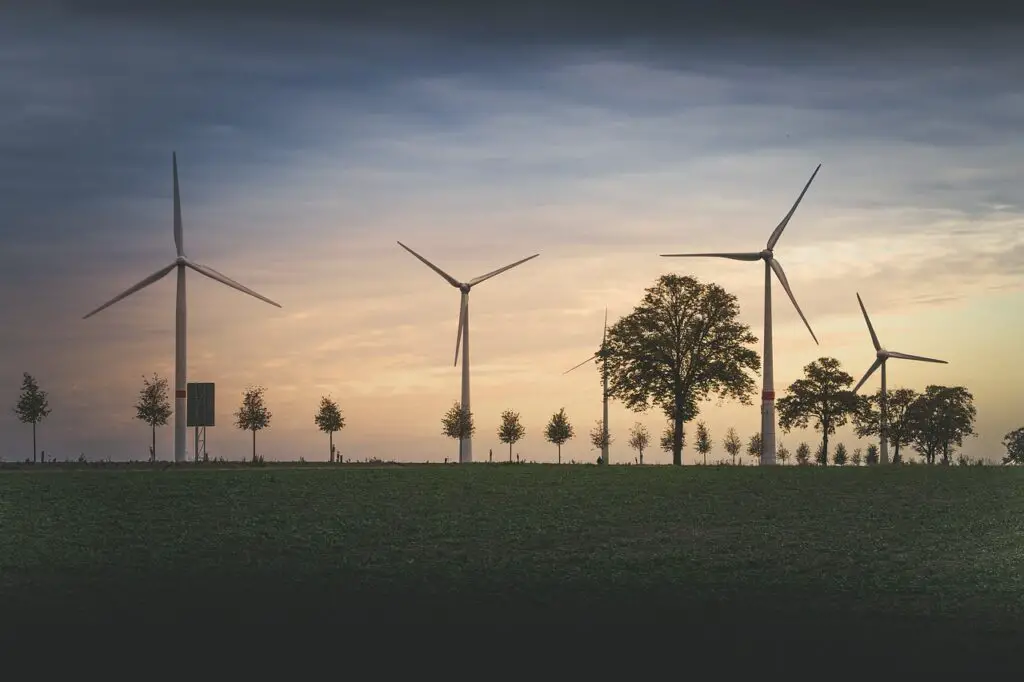In the era of renewable energy resources, the idea of using fossil fuels for energy generation is losing its essence. Experts have anticipated seeing fossil fuels running out in the near future. With that being said, the only thing to bring comfort back into life is to figure out which alternate source to use.
Some options, including wind, solar, geothermal, and biomass, would need support from each other to meet consumers’ requirements. None of them could handle the load on their own. Here, the best part is getting a clean and healthy environment along with energy, which requires the least investment you could think of.
One of the emerging energy sources is definitely winded turbines, considering the flow and pressure of wind across the world. Authorities just have to place them strategically to generate the most electricity for commercial as well as residential use (Energy I. C., 2021).
Let’s dig deeper into the science of how wind turbines make it happen and how much energy they can produce.
Energy Generation by Wind Turbines
When the air pressure hits the surface of wind turbine blades, they rotate in an anti-clockwise direction, thereby producing a significant amount of electricity generation. Basically, they are responsible for storing wind’s kinetic energy (i.e. moving energy) and converting it into usable power for the consumers.
Types of Wind Power
Today, you will find 3 types of wind energies that hold unique benefits from each other:
- Offshore wind power: As the name suggests, they are huge wind turbines present at sea that produce maximum energy.
- Utility-scale wind power: Available in all sizes and are responsible for transferring power to the grid station managed by utility companies.
- Distributed Wind Power: Responsible for generating electricity on a small scale.
It is worth mentioning that you can only sometimes rely on clean sources to generate energy, like solar and wind. They still burn fuels and omit dangerous gasses into the atmosphere, making the surroundings unfavorable. Therefore, choosing the right energy source to minimize carbon footprint and other waste is important.
Wind Turbine Mechanism
In simple terms, wind turbines are somewhat like historic windmills that grind grains with the wind. As soon as the wind strikes the turbine’s blade, it captures its kinetic energy and begins its movement by 3 to 5 meters per second. As the blades move, they generate mechanical energy while a gearbox near turbine shafts speeds up the motion by up to 100 times. The spinning sends power to the generator responsible for producing electricity.
Nowadays, onshore wind turbines can generate up to 3 MW (Megawatts) with 50m long blades, which is enough to work for around 6 million kilowatt hours per year. In other words, they can power around 1,500 households on average (Energy, 2022).
AC or DC – Which Power Do They Produce?
Technically, generators are designed to produce alternating current or AC electricity. However, some turbines have an in-built converter that changes AC into DC (Direct Current) and vice versa according to the specifications of the grid. The only difference lies in how their electrons work- in AC, they switch directions, while in DC, they always flow in one direction.
Types of Wind Turbines
Multiple types of wind turbines work in different situations in different ways. One of the widely used wind turbines is the HAWT or Horizontal Axis Wind Turbine, which looks somewhat similar to airplane propellers on towers.
On the contrary, vertical axis turbines are provided with two blades attached to the top and both upright rotors. Due to their large size, they haven’t received as much appreciation as horizontal turbines.
There were many more wind turbines in the past, but their lower utility and low performance made them inferior to these two.
What’s the Capacity of a Wind Turbine?
The turbine starts working when the wind speed reaches 6 to 9 mph (miles per hour). Its internal control system makes sure that it works at the right speed. When the speed crosses 55 mph, its control system warns the mechanism and prepares it to shut down to avoid any incident while working.
Moreover, the turbine’s performance reduction could be because of some inefficiencies. These unavoidable conditions may reduce its performance by 30% to 40%, which may even go to 50% during heavy wind conditions.
According to the statistics, an offshore wind turbine has the capacity to generate 2.5 to 3 MW (megawatts) that can work for more than 6 million kWh per year- which is enough to lighten up over 940 US homes (USGC, 2021).
Is 1 Wind Turbine Enough for a Household?
Utility-scale wind turbines need help from alternatives to meet a household’s requirements. Small wind turbines are usually rated at 100 KW or less and are enough to provide energy to a small business or a home.
They can produce power just like solar panels, which can store power in batteries and provide energy during windy days. However, it’s important to be vigilant about the airflow. It may be less for a couple of days, or things would be the other way around.
Rest assured, wind turbines and solar panels are not your financial investments. Even though they can reduce your electricity bills, they need assistance in one way or the other.
However, if you plan to go for one, always choose wind turbines because of their reliability. The best thing is wind is 100% free with an unlimited supply.
Conclusion
Wind energy is not something you can completely rely upon. It still has a long way to go to fulfill the world’s power needs. But it can be an important contribution to bringing some change in the environment.
References
- Energy, G. (2022). How do wind turbines work? Retrieved from Good Energy: https://www.goodenergy.co.uk/how-do-wind-turbines-work/
- Energy, I. C. (2021). How Much Energy Does A Wind Turbine Produce? Retrieved from Inspire Clean Energy: https://www.inspirecleanenergy.com/blog/clean-energy-101/how-much-energy-does-wind-turbine-produce
- USGC. (2021). How many homes can an average wind turbine power? Retrieved from USGC- Science for a Changing World: https://www.usgs.gov/faqs/how-many-homes-can-average-wind-turbine-power







